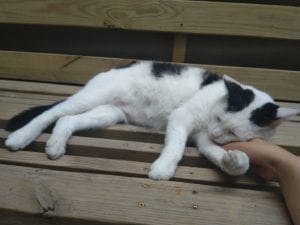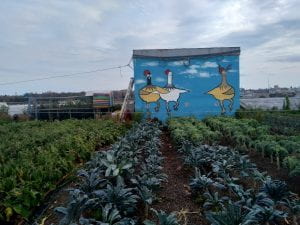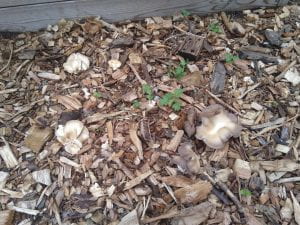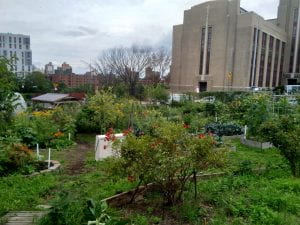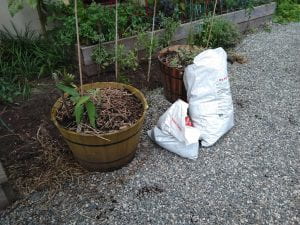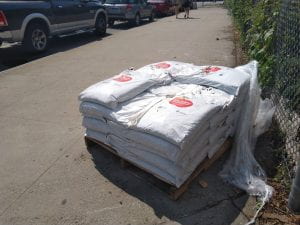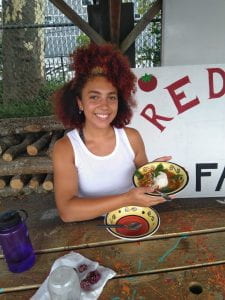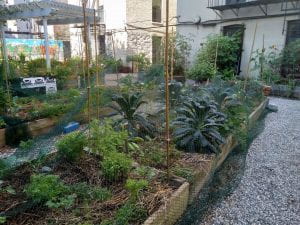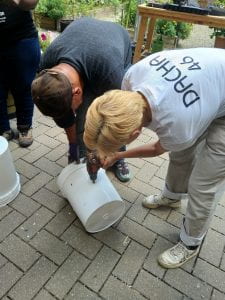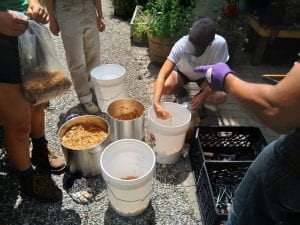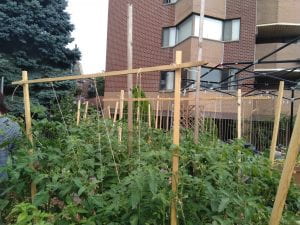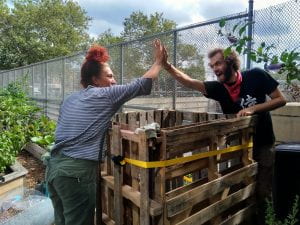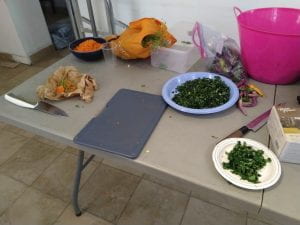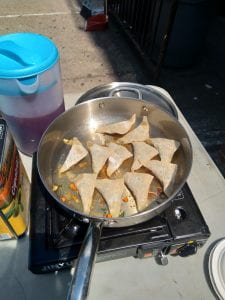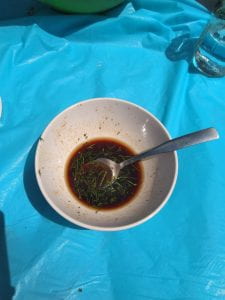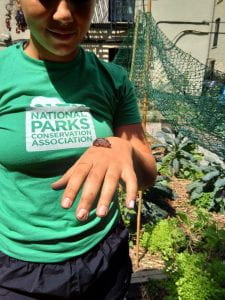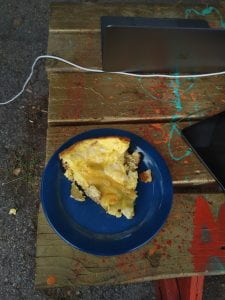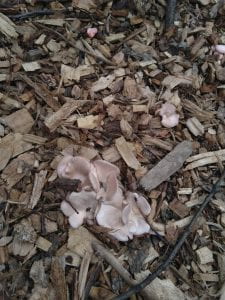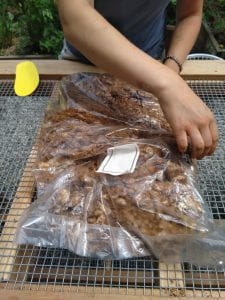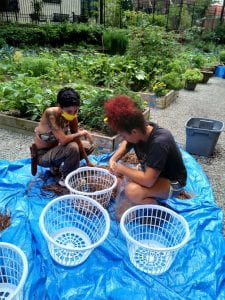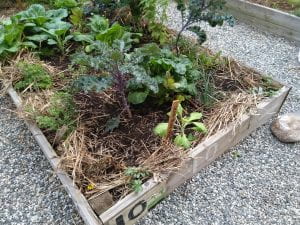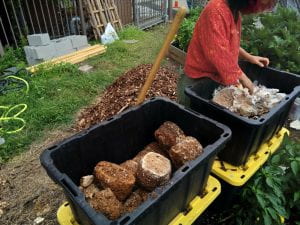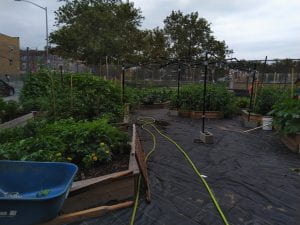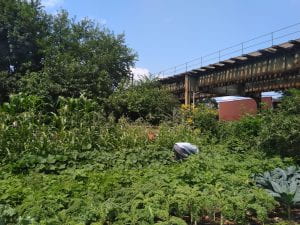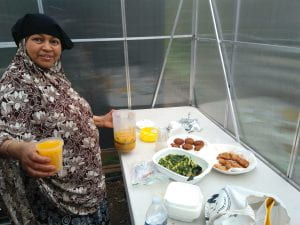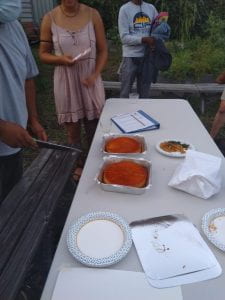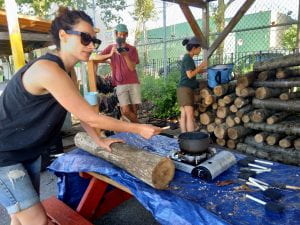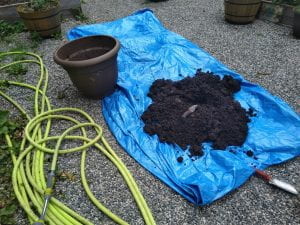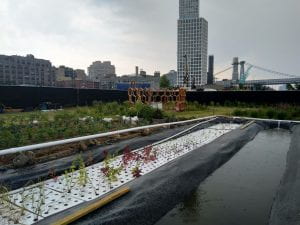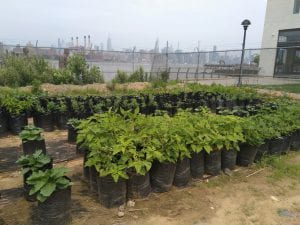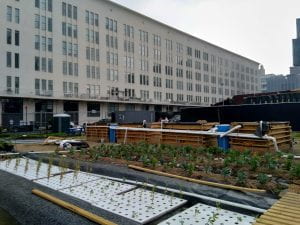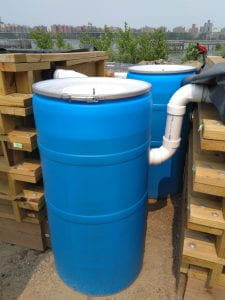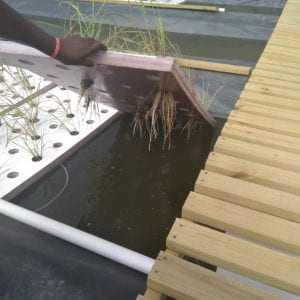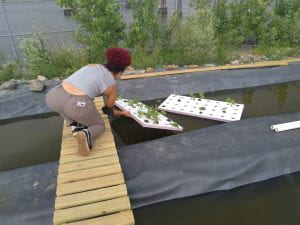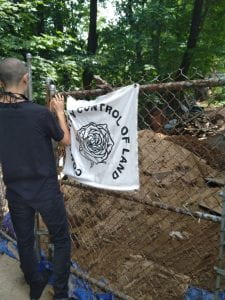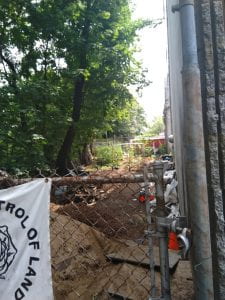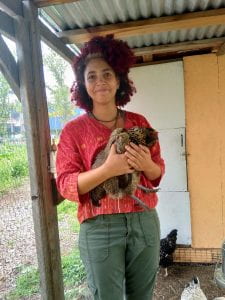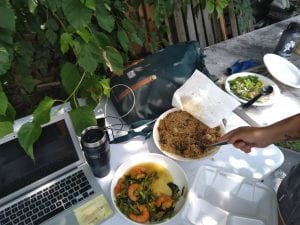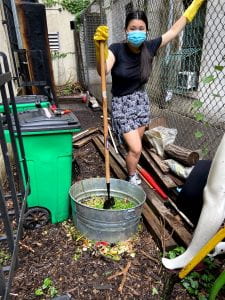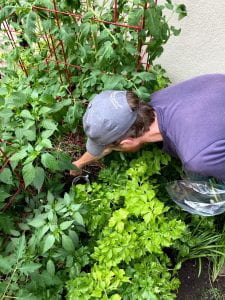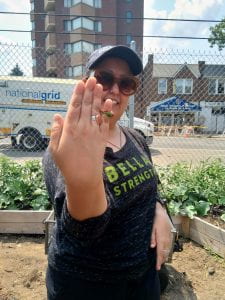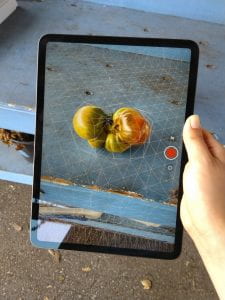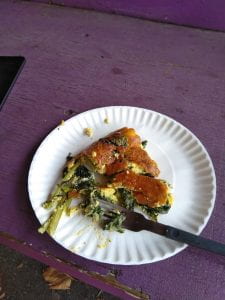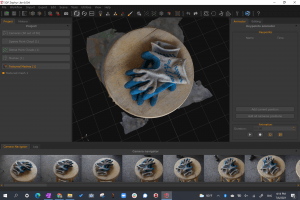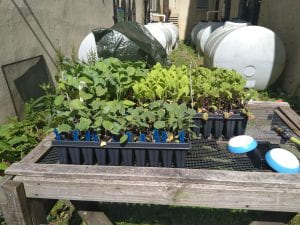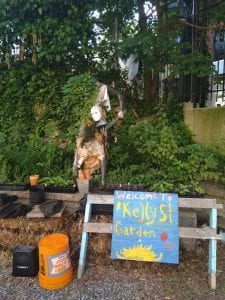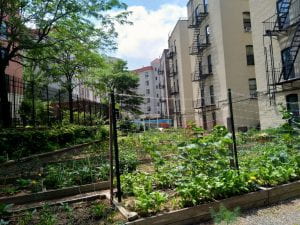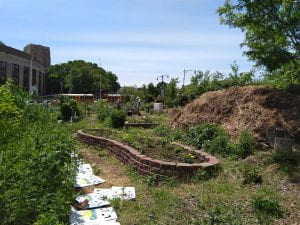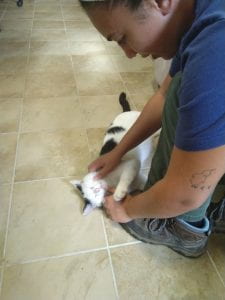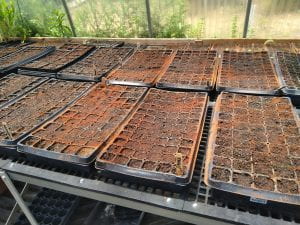Coming into this week felt unavoidably bittersweet. While I always looked forward to working in the gardens and farms each week, knowing that this would be the last for this internship made me want to cherish every moment I shared with the people I had been working with all summer. At the same time, though, there were several exciting events this week that I was looking forward to, making the week feel even shorter as each day came and passed. In a way, though, while the majority of the rest of the week was busy with routine garden and farm maintenance tasks, I’m glad that there wasn’t any large fanfare or major events signifying the end of the summer since this is only the end of my summer internship, but not my involvement with these gardens and farms!
For instance, at Kelly Street Garden on Monday, the other garden volunteers and I primarily continued our work from last week of spreading the New York Department of Sanitation’s compost on all of the beds. As well, we also worked on repotting some plants such as a Christmas cactus.
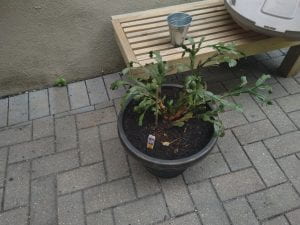
During this time, though, I was finally able to learn more about the history of Kelly Street Garden. The land is owned by the housing development, and while the original plan was to use the space as a community garden for residents, due to a lack of engagement, Sheryll and Renee were able to instead transform the space into a public community garden. I’ve always been so fascinated by Kelly Street Garden’s location. Like a hidden oasis, the garden is only accessible by a staircase leading underneath one of the many apartment buildings on its street, such that only those who knew what to look for could find it. Because of this, it’s even more exciting to hear about Kelly Street Garden’s origins since, with such an out-of-the-way location, the space could have easily become a forgotten piece of land relegated to only the weeds and trash thrown from nearby buildings.
Through this story, I feel like the lens through which I typically viewed the city has shifted; just how many other hidden plots of land are there that could be cleaned up into a community garden? As well, how can we better connect those who want to start community gardens with the knowledge and resources to make their ideas into a reality? Beyond this, too, is the question of spreading awareness of what community gardens are and the feasibility of creating them. In many cases, it’s often difficult to envision something new if you’ve never seen an example of it in action. Thus, while I have learned so much about the forms and functions of existing community gardens and urban farms, I am also still so curious about larger issues of public education surrounding food sovereignty and urban farming. Working with Cornell Cooperative Extension this summer and being able to attend workshops and meet extension workers has given me a glimpse into how agricultural extension is approaching the issue of knowledge gaps among garden and farm managers in order to enhance their operations, but I can’t help but continue to wonder who is being left out of these exchanges. Of course, I don’t think that this is intentional but rather an existing problem, as once again, it will always be difficult to envision a solution or a problem if it remains elusive. As a major tenet of Cornell Cooperative Extension’s mission is outreach, as I continue to work in the field of agricultural extension, I am curious to discover which groups in New York City are often invisible, and what can be done about this.

One way that I was able to take beginning steps to address this concern was in reaching out to meet with the Red Hook Community Farm youth interns on Wednesday. The questions of visibility, access, and outreach have been especially relevant questions that Kendra and I have contended with throughout the summer, and hadn’t found adequate avenues to address them until last week when we were able to meet with Brendan, Red Hook’s farm manager, and Koron, Red Hook’s farm assistant, and formally propose a meeting with the youth interns to both introduce VR technology as a concept and our project, as well as giving them the opportunity to contribute their own experiences and ideas about how the technology would be useful for them. While Kendra was unable to join the meeting as her internship period had already concluded, I was able to meet with Perl, who has extensive experience developing critical participatory action research (CPAR) projects as well as a close relationship with Red Hook Initiative having worked with them in the past.
During the meeting, I was consistently surprised and invigorated by the comments and suggestions the youth interns made. In an early exercise where we asked the interns to take pictures of things at the farm that held meaning or importance to them, I hadn’t expected to see that so many of the interns took pictures of different structures at the farm. What was more surprising, though, were the rationales the interns gave explaining their choices. Rather than the structures themselves, what they valued most were the stories and memories associated with those structures, whether they had housed playful moments between each other during their internships, or stood as a testament to the work the interns had done in building the structures. In the past, whenever Kendra and I had talked with Tapan about what the VR model of the farm would look like at its completion, we had always danced around the topics of what we should feature at the farm, and much of our work this summer had been focusing on scanning the largest objects at the farm as we believed that those monuments would best represent the farm. But, as I realized through this meeting, our decision to focus on what we thought represented the farm was always going to be different from what those who actually work at the farm believed. No matter how passionate we are about this project, enthusiasm cannot translate to the weeks and months of experience that those who live within the community possess. For instance, several of the interns had expressed that they’ve worked at Red Hook for over three years, and have thus seen the farm change throughout the seasons and throughout the years. Their insight is wholly unique and their stories are what truly enrich and define the farm. While I was relieved and grateful to have had the opportunity to facilitate this meeting and hear from and collect the interns’ ideas about the next stages of the project, what I walked away with most was the realization that as an outsider, my job moving forward is to ensure that these voices are heard and tangibly inform the decision-making process throughout the remainder of the project’s development.
It is this understanding in an even broader sense that is truly the largest lesson that I’ve learned this past summer. As I spent my Thursday at New Roots Community Garden in Woodside speaking with young children, and neighbors, or my Friday at New Roots Community Farm in the Bronx conversing with local residents and volunteers, I realized that with so much still to learn about community gardening and urban farming, there is such an incredible wealth of knowledge to learn from all of the people that I meet in these spaces, regardless of age or national origin or any variety of external difference. While a fundamental facet for developing greater human empathy, the recognition of the necessity for lifelong humility doesn’t come easily. On Friday, during a conversation I had with Shari, a communications specialist who works with my supervisor, Jenny, whom I was able to meet for the first time that day, it dawned on me that without the people that I met, both professors and students, from my classes my major, I might not have realized the critical importance and value that humility has, not only in my line of work but in my approach to life overall.
Currently, I try to center community voices and needs in all aspects of what I do, as I’ve seen and heard before the disastrous outcomes that failing to do so can have, ranging from the monetary losses associated with failed development projects to actively harming the community by worsening their existing problems. However, not everyone is able to attend classes or meet people who have studied and understand this nuance in humanitarianism. Once again, this raises the question of education, and who is being left out. In this case, though, the question extends not only to who is unable to receive education, but who is unable to share their knowledge. Whose voices from which communities are forgotten in the building of modern curriculums. From what I’ve learned this summer, it is truly from people that knowledge is co-created and communities are born. While my summer internship comes to a close, this is hardly an end as I plan to continue engaging with these questions while also maintaining contact with many of the farm managers and volunteers I’ve met this summer. Even more concretely, I will also continue to work on the VR project by building more models and taking the opportunity to put into practice what I’ve learned by helping to develop many of the ideas that the youth interns I had met had suggested. This was undoubtedly an unforgettable summer, and the experiences that I had have shaped me into a better gardener, farmer, and person, and I already know that I will be carrying the lessons that I’ve learned throughout the rest of my time at Cornell and through everywhere else.
Week In Review:
